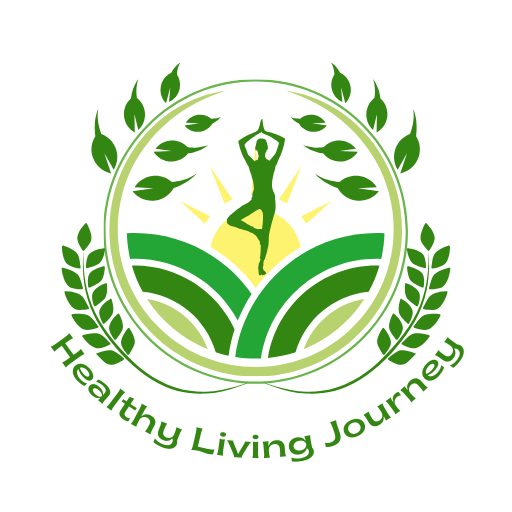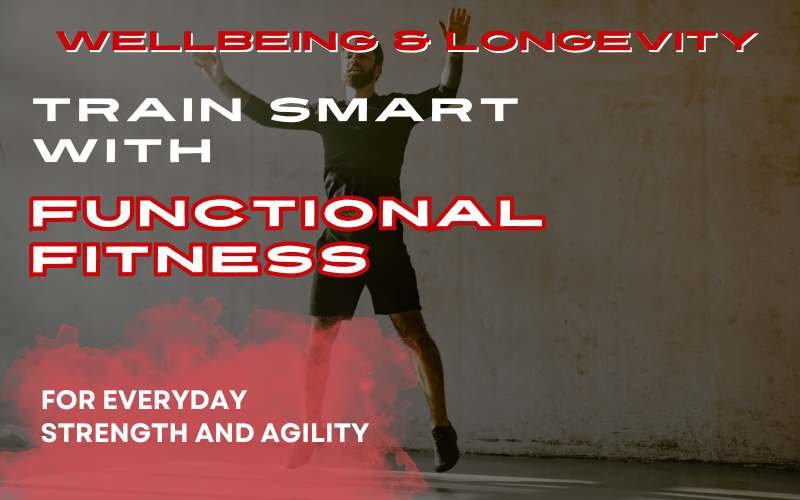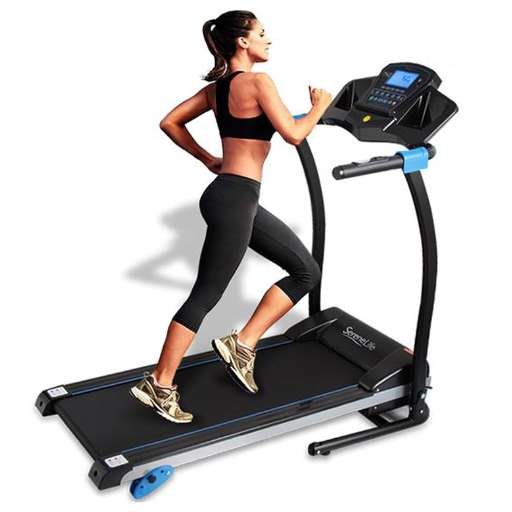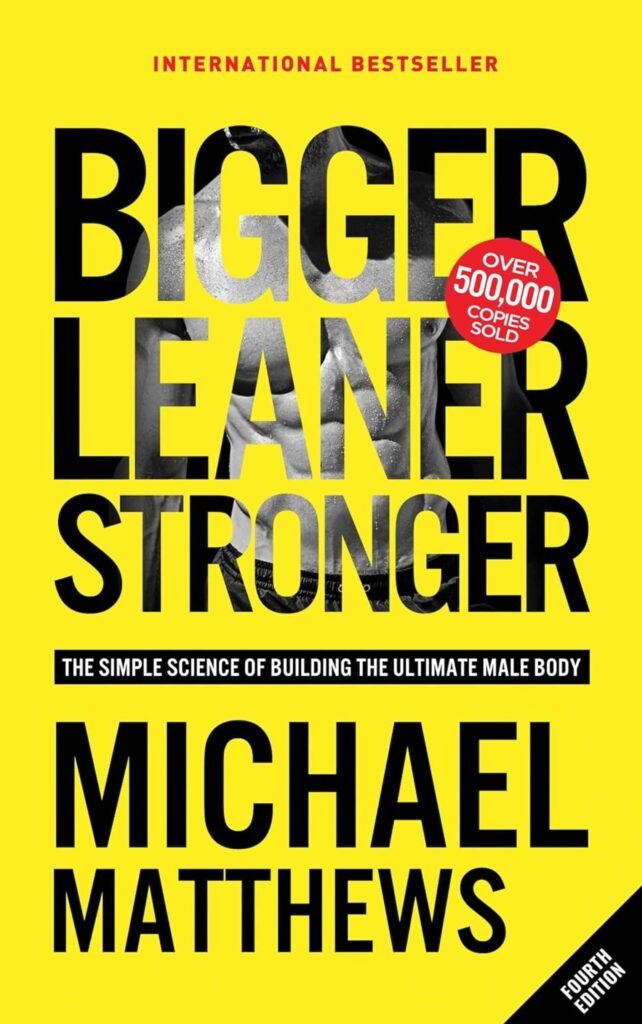Do you train your body for the challenges of everyday life? 51% of consumers choose exercises that prepare them for daily tasks1. Functional fitness is crucial to building strength and mobility in real life. It makes everyday tasks more accessible and fun and helps you age healthily. You can live a more vibrant life by changing your workouts to match your lifestyle. But what makes this method so important for staying healthy throughout your life?
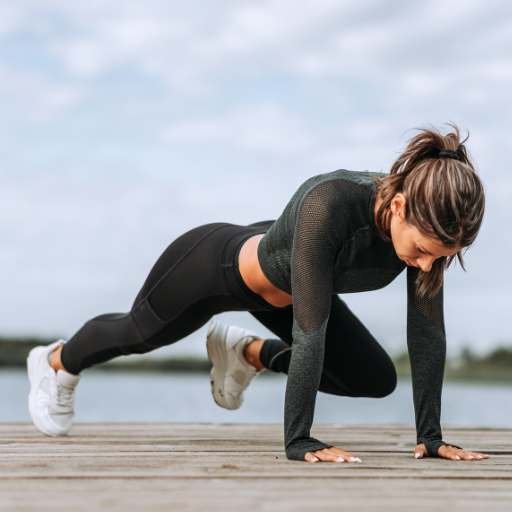
Disclosure: We participate in the Amazon Services LLC Associates Program, an affiliate advertising program designed to provide a means for us to earn fees by linking to Amazon.com and affiliated sites. When you purchase through an Amazon affiliate link placed on our website, we may receive a small commission at no additional cost to you.
Key Takeaways:
- Functional fitness matches your daily activities, boosting real-life strength and mobility.
- It focuses on exercises that work many muscles simultaneously, just like in real life, for a longevity lifestyle.
- A mix of exercises, such as compound lifts, calisthenics, and low-impact activities, prepares your body for daily tasks and healthy aging12.
- Functional fitness helps prevent injuries and keep joints healthy for people of all ages 3.
- This method focuses on core strength and flexibility to improve balance and overall strength2.
- It’s a flexible and lasting way to stay fit, perfect for different life stages and independence.
Defining Functional Fitness
Functional fitness is about staying healthy, full of life, and strong for everyday tasks. It’s different from old-school workouts that focus only on looks or isolated strength. Functional fitness helps us with daily tasks and keeps us aging well. It’s a way to live longer and move better, fitting our natural ways of moving and daily activities.
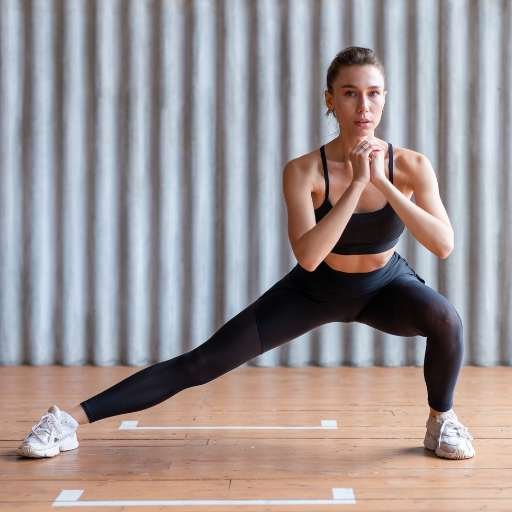
The Philosophy Behind Functional Fitness
Functional fitness mirrors the activities we do every day. It works many muscles simultaneously, making us more aware of our bodies. This is key for staying balanced, quick, and coordinated as we age. Experts say that most of how well we age can be shaped by our physical habits over time4.
The World Health Organization has set goals for healthy aging from 2015 to 2030. They say functional exercises are vital to keeping people moving and independent as they age4. This shows how important it is to keep moving and stay independent later in life.
Why Traditional Workouts Differ from Functional Fitness
Old-school workouts often focus on just one muscle at a time. Functional fitness, however, uses moves that mimic real-life tasks like lifting and bending. This way, our strength can be used more for everyday tasks. Studies show that staying active with functional exercises helps us age better and live longer5.
Functional fitness helps us move our joints, build stronger muscles, and keep our hearts healthy. It also prepares us to continue doing things independently. Regular exercise can also prevent chronic diseases and slow mental decline, making life better and longer6.
So, functional fitness is more than just working out. It’s a way of life that focuses on staying healthy, feeling good, and enjoying life as we age.
Emphasizing Real-Life Movement
Functional fitness focuses on building practical strength with exercises that mimic everyday actions. This helps improve agility and coordination, which are key to staying healthy as we age. These exercises make daily tasks easier and help us live longer more active lives.
Exercises Mimicking Daily Activities
Functional workouts include squats, lunges, and deadlifts, which are similar to sitting, lifting, and pushing in real life. These exercises are key for staying strong and independent as we age. Doing them often is a great way to fight aging and stay healthy by matching our workouts with our daily activities.
Importance of Multi-Muscle Engagement
Working out with exercises that use many muscles simultaneously boosts fitness and metabolism. It helps burn more calories and improves health. This approach is essential for staying healthy as we age. It helps keep muscles strong and joints healthy, which is important for staying active and fighting aging.
Studies show that states with the highest life expectancy often have the healthiest lifestyles. This highlights the importance of regular, full-body exercises in our daily routines7. Moving often is key to keeping us strong, balanced, and able to enjoy life longer8.

Building a Longevity Lifestyle Through Functional Fitness
Functional fitness is key to living a long and healthy life. With people living to about 73 years on average, focusing on physical health is vital9. Improving muscle strength and endurance makes everyday tasks easier and more efficient.

It also helps you age well. It fights chronic diseases affecting six out of ten US adults, keeping you healthy as you age older9. Functional fitness prepares your body for life’s physical demands, easing the effects of aging.
Studies show that activities like Tai Chi help both young and old feel better mentally9. Mediterranean diet can also boost health, reducing sudden cardiac deaths10.
Living this lifestyle means focusing on both diet and exercise. A plant-based diet and lifestyle changes can even reverse some signs of aging9.
Experts say being proactive with health can make you live longer and better11. New digital health technologies could make staying healthy easier for everyone in the future11.
Importance of Core Strength and Stability
Building core strength and stability is key to staying fit and healthy, especially as we age. The core isn’t just about abs; it’s the core of our movements. Strengthening helps with balance, posture, and overall health, which is crucial for aging.
The Role of the Core in Everyday Actions
Our core muscles help us with everyday tasks like lifting groceries or climbing stairs. They provide the stability we need for safety and ease. Strong cores reduce the risk of falls, a big concern for older adults12. They also help prevent back pain, which affects over half of Americans, often due to weak core muscles13.
Importance of Multi-Muscle Engagement
Working out with exercises that use many muscles simultaneously boosts fitness and metabolism. It helps burn more calories and improves health. This approach is essential for staying healthy as we age. It helps keep muscles strong and joints healthy, which is important for staying active and fighting aging.
Studies show that states with the highest life expectancy often have the healthiest lifestyles. This highlights the importance of regular, full-body exercises in our daily routines7. Moving often is key to keeping us strong, balanced, and able to enjoy life longer8.
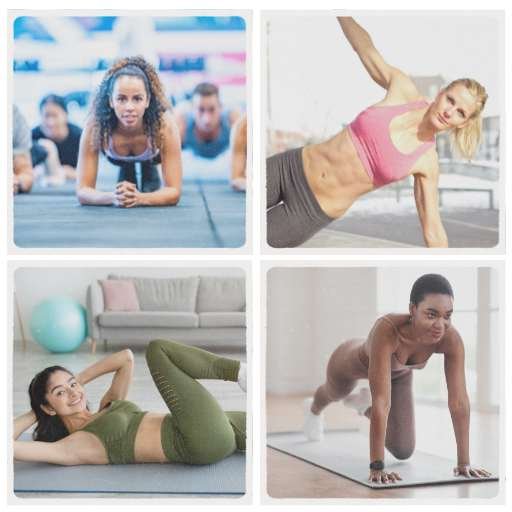
Key Core-Strengthening Exercises
Adding core exercises to your workout can improve stability and longevity. Planks work multiple muscles, improving balance and endurance. Start with 20-30 seconds and work up to 45-60 as you get stronger12. The American Heart Association recommends doing muscle-strengthening exercises like planks and wall push-ups twice a week13.
Core exercises are crucial for everyone, but even more so as we age. They improve balance, independence, and quality of life in older adults13. Keeping the core strong is key for healthy aging, with exercises that strengthen and stretch the muscles, helping with movement and reducing wear on the body14.
Following these tips can lead to more fun activities, energy, and less fatigue14. Regular and correct core exercises can significantly improve your life, helping you live longer and better.
Enhancing Flexibility and Mobility
As we age, maintaining flexibility and mobility is key. It’s important for staying active and healthy and for performing everyday tasks. Specific stretches and exercises can help a lot. They make moving easier and lower the chance of getting hurt.
Stretching: A Vital Component for Fluid Movement
Stretching every day is crucial for keeping your movements smooth. Activities like yoga not only make you more flexible, but they also help keep your joints healthy and can reduce stress. A program called CAPABLE showed great results, with people doing fewer daily tasks after five months15.
Dynamic Exercises for Improved Joint Health
Dynamic exercises are crucial to keeping joints healthy. They make joints move and help with blood flow, essential for keeping them from getting stiff and sore. Studies show that doing these exercises can help older adults feel less depressed15.
Injury Prevention and Functional Fitness
Injury prevention and functional fitness are key to living a long life. Functional fitness focuses on exercises that mirror everyday activities. This approach helps prevent injuries and improves joint strength and coordination.
How Functional Fitness Reduces Injury Risk
Functional fitness workouts target muscles and joints crucial for daily movements, reducing the risk of common injuries. Research shows that fall prevention programs reduce fall-related injuries in older adults16.

Strengthening Joints and Improving Coordination
Functional fitness combines strength training and balance exercises for a well-rounded approach. Studies reveal that resistance training boosts muscle strength and supports joint health16. Balance training also improves balance in older adults, enhancing coordination16.
Following health guidelines, which include moderate exercise and strength training, can significantly improve physical health and joint function17.
Functional fitness is more than staying physically active. It’s about preventing injuries, strengthening joints, and improving coordination. This approach ensures daily activities are done safely and efficiently, and it’s essential for a long and healthy life.
Functional Fitness for All Ages
Functional fitness benefits people of all ages, especially those who want to age gracefully and stay mobile. It’s key to staying healthy and independent. Let’s explore how it helps at different life stages, especially for seniors.
Adapting Workouts for Different Life Stages
It’s vital to pick exercises that fit your age. For those under 30, keeping muscles strong is essential. After 30, our bodies start to slow down a bit each year18. But staying active can help you keep your abilities high as you age.
Regular exercise helps you maintain about 70% of your function by age 9018. Focusing on balance, flexibility, and strength is key to a good life as you age.
Special Considerations for Aging Individuals
More people are living longer, with many over 80 by 205019. Older folks face more health problems and trouble moving easily because of arthritis19. Functional fitness is vital for fighting and keeping these issues moving and independent.
Exercises for seniors focus on joints, flexibility, and strength. This allows them to continue living well and staying independent.
Functional fitness is essential for everyone but is perfect for older adults. It helps them live better and stay independent. Older people can move well and age gracefully by choosing the right exercises.
Functional Fitness Workouts Structure
An effective workout plan is key to improving health and boosting sports performance. It also helps with weight loss and strengthens muscles for everyday tasks. By focusing on full-body exercises, you work out many muscle groups simultaneously, improving your physical and metabolic health.
Designing a Full-Body Functional Workout
An excellent functional fitness plan includes core exercises, strength training, and flexibility workouts. This mix helps with long-term health and keeps you moving well. Each workout starts with a warm-up and then moves to strength exercises like squats and deadlifts. These exercises help fight muscle loss and boost testosterone levels20. Finally, a cool-down period helps with recovery and lowers injury risk.
Tailoring Workouts for Specific Goals
For those looking to lose weight, high-intensity workouts are key. These workouts can go from zones 4 to 5, boosting your metabolism and burning calories21.
If you want to improve at sports, include exercises mimicking game movements. This can improve your anaerobic and aerobic abilities.
Older adults might focus on exercises that help with balance and strength. These exercises are vital for staying agile and keeping muscles strong, and they help you feel younger in your body20.
No matter your goal, having a well-planned workout is crucial. You can change the intensity, length, and types of exercises to fit your fitness and health needs. This way, every workout can help you reach your goals.
The Role of Nutrition in Functional Fitness
The link between nutrition in fitness and health is vital, especially for functional fitness.
Fueling for Performance and Recovery
Healthy eating gives you the energy and nutrients to train and recover well. A balanced diet with the proper nutrients helps with energy and muscle recovery, which is key for keeping up the intensity and length of your fitness workouts. Protein intake is super important for fixing and building muscle that gets worn out during exercise. Eating different kinds of protein, like lean meats, beans, and dairy, helps with recovery22.
Nutrients That Support Mobility and Strength
Omega-3 fats are found in fatty fish, flaxseeds, and walnuts. They help reduce inflammation, improve joint health, and support mobility. Omega-3s also help lessen joint pain after exercise and keep cell membranes healthy22. Eating foods with antioxidants and minerals also helps keep bones and muscles strong, which is key for functional fitness.
In summary, eating right for nutrition and fitness is crucial. It means eating healthy and ensuring you get enough omega-3 fats and protein. This helps improve your fitness performance, recovery, and overall health22.
Choosing the Right Functional Fitness Equipment
Choosing the right fitness equipment is key to reaching your fitness goals. It’s not just about adding tools to your routine. It’s about picking gear that matches your fitness goals. The right equipment can change your fitness journey, whether you’re into resistance training, kettlebells for strength, or balance training.
Tools to Enhance Your Functional Workout
Adding resistance bands to your workout can make a big difference. They add variety to your exercises. Kettlebells boost strength, flexibility, and energy, leading to better health23. Balance boards or stability balls improve coordination and stability, which are key for balance training24.
Working with Equipment Safely and Effectively
It’s crucial to know how to use new fitness equipment safely. Make sure your stability ball can hold up to 2,000 pounds for safety24. Working with a certified trainer helps you use kettlebells and resistance bands right. They ensure you move safely, avoid injuries, and get the most out of your workout.
Mixing in-studio classes with on-demand options makes fitness fit your schedule23. This approach lets you fit functional fitness into your day, even with just 10-20 minutes23. Low-impact equipment makes fitness open to everyone, regardless of age or fitness level23.
Choosing the right fitness equipment is about more than just the gear. It’s about picking tools that meet your workout needs and help your health and longevity. Focus on equipment that suits your fitness level and goals—every move you make moves you closer to a healthier, more active life.
Conclusions
Functional fitness is a key to fitness empowerment, guiding us on a lifelong fitness journey. It makes our bodies ready for everyday life, helping us live confidently. By choosing this path, we’re not just getting fit. We’re improving our lives in ways that make aging a positive chapter.
Functional fitness teaches us to move like we do in real life. This keeps our minds sharp and our social connections strong25. Studies show that staying fit, mentally sharp, and connected is critical to aging well25. Our genes also play a significant role, affecting our strength, brain health, and overall healthspan26. This tells us to think about our lifestyle, social status, and healthcare access too26.
Functional fitness helps us live fully, no matter our age. It gives us the tools for a life full of energy and independence. This approach turns fitness into a key part of living well, making every year of life meaningful and purposeful.
FAQ
What is functional fitness, and how does it relate to real-life strength and mobility?
Functional fitness is a way to train and prepare your body for everyday life. It focuses on the movements you do every day. This type of training helps you stay strong and mobile for daily tasks. It’s great for staying healthy and aging well.
Why does functional fitness emphasize muscle engagement in everyday functions?
Engaging muscles in daily tasks is key to strength and coordination. It helps you do everyday activities safely and efficiently. Functional fitness ensures you can move naturally, which is important for aging well.
How do exercises mimicking daily activities contribute to healthy aging strategies?
These exercises prepare your body for daily tasks and lower injury risk. They boost strength, coordination, and flexibility, which is crucial for aging healthily and staying active.
What longevity benefits does practicing functional fitness provide?
Functional fitness offers many benefits, like better balance and muscle function. It also improves coordination and lowers the chance of falls. These benefits help you stay healthy and independent as you age.
Why is core strength and stability so important in functional fitness?
The core muscles support your body. Strong core muscles help with posture, reduce back pain, and improve movement. A strong core makes exercises and daily activities safer and more efficient, which is key for healthy aging.
How does improving flexibility and mobility contribute to a longevity lifestyle?
Better flexibility and mobility help prevent injuries and reduce stiffness. They also improve movement and keep joints healthy. These benefits let you do daily tasks easily, which is important for a healthy life as you age.
Can functional fitness help with injury prevention?
Yes, functional fitness helps prevent injuries. It strengthens muscles and joints for natural movements, reducing the risk of injury during daily activities or exercise.
How can functional fitness be adapted for seniors focusing on aging gracefully?
Functional fitness can be adjusted for seniors to keep them independent and mobile. It uses lower intensity and modified exercises to focus on balance, strength, and joint health, helping seniors age gracefully.
What does a functional fitness workout typically include?
A functional fitness workout starts with a warm-up and moves to strength training. It includes exercises for mobility and flexibility and ends with a cool-down. Workouts can be tailored to your fitness level and goals.
What role does nutrition play in supporting a functional fitness regime?
Nutrition is key for functional fitness. It gives you energy, helps muscles recover, and supports joint health. Eating a balanced diet with proteins, carbs, and healthy fats and staying hydrated is essential for an intense fitness practice.
How should one select functional fitness equipment?
Choose versatile equipment like resistance bands and kettlebells. Tools that challenge balance, such as balance boards, are also good. Use the right equipment safely, with guidance from a certified trainer, to avoid injury.
Articles You May Like:
Source Links
- How to Train for Longevity with Functional Fitness – https://www.prosourcefit.com/blogs/news/how-to-train-for-longevity-with-functional-fitness
- 7 Functional Fitness Moves for Longevity To Age Comfortably | Well+Good – https://www.wellandgood.com/functional-fitness-moves-longevity/
- Functional Fitness: The Foundation of Elevate’s Strength Programming – Elevate St Pete – https://elevatestpete.fit/functional-fitness-the-foundation-of-elevates-strength-programming/
- Healthy aging and functional ability – https://www.who.int/news-room/questions-and-answers/item/healthy-ageing-and-functional-ability
- Physical activity as a determinant of successful aging: a narrative review article – https://www.ncbi.nlm.nih.gov/pmc/articles/PMC9151514/
- Functional fitness, lifestyle, and demographic factors as predictors of perceived physical and mental health in older adults: A structural equation model – https://www.ncbi.nlm.nih.gov/pmc/articles/PMC10482288/
- Healthspan may be more integral to your well-being than lifespan. Here is how to lengthen it – https://fortune.com/well/2023/04/15/healthspan-may-be-more-integral-to-your-well-being-than-lifespan-how-to-lengthen-it/
- Lifestyle changes could add 10-15 years to your life – https://www.airforcemedicine.af.mil/News/Display/Article/3214534/lifestyle-changes-could-add-10-15-years-to-your-life/
- Lifestyle to Support Longevity & Healthy Aging – https://www.ifm.org/news-insights/lifestyle-to-support-healthy-aging/
- What Do We Know About Healthy Aging? – https://www.nia.nih.gov/health/healthy-aging/what-do-we-know-about-healthy-aging
- According to one expert, building a ‘longevity mindset’ can help you live longer. Here’s how – https://fortune.com/well/article/building-longevity-mindset-live-longer/
- Beyond Local: The importance of balance and core strength as we age – https://www.townandcountrytoday.com/beyond-local/the-importance-of-balance-and-core-strength-as-we-age-7085962
- Importance of Core Strength: 11 Benefits of a Strong Core – https://www.healthline.com/health/core-strength-more-important-than-muscular-arms
- Why core strengthening exercises matter at every stage of life | HCF – https://www.hcf.com.au/health-agenda/body-mind/physical-health/core-strength-at-any-age
- Maintaining mobility and preventing disability are key to living independently as we age – https://www.nia.nih.gov/news/maintaining-mobility-and-preventing-disability-are-key-living-independently-we-age
- Physical Activity, Injurious Falls, and Physical Function in Aging: An Umbrella Review – https://www.ncbi.nlm.nih.gov/pmc/articles/PMC6527126/
- The 5 Longevity Exercises a Physical Therapist Recommends To Stay Strong and Pain-Free as You Age—No Equipment Required – https://www.wellandgood.com/exercises-for-aging/
- How physical activity keeps you young: Playing recreational sports for a longer, healthier life – Mayo Clinic Press – https://mcpress.mayoclinic.org/healthy-aging/how-physical-activity-keeps-you-young-playing-recreational-sports-for-a-longer-healthier-life/
- Functional Medicine Nutrition and Exercise Protocol for Aging Populations: Enhancing Longevity and Well-Being – https://www.rupahealth.com/post/functional-medicine-nutrition-and-exercise-protocol-for-aging-populations-enhancing-longevity-and-well-being
- Longevity Experts Share The Exercises They Do to Live Longer – https://honehealth.com/edge/fitness/exercise-aging-longevity-expert-workouts/
- My Exercise Routine for Health and Longevity – https://drhyman.com/blogs/content/my-exercise-routine-for-health-and-longevity
- From lifespan to healthspan: the role of nutrition in healthy aging – https://www.ncbi.nlm.nih.gov/pmc/articles/PMC7550962/
- Functional Fitness Is a Trend to Watch in 2024 – https://www.wellspa360.com/wellness/health/article/22888793/functional-fitness-is-a-trend-to-watch-in-2024
- Personal Trainer-Approved: The Safest, Most Effective Exercise Equipment for Older Adults – https://www.verywellfit.com/best-exercise-equipment-for-seniors-7563564
- Aging Well: Toward a Way of Life for All People – https://www.ncbi.nlm.nih.gov/pmc/articles/PMC1364512/
- Genetic, Social, and Lifestyle Drivers of Healthy Aging and Longevity – https://www.ncbi.nlm.nih.gov/pmc/articles/PMC10686287/

